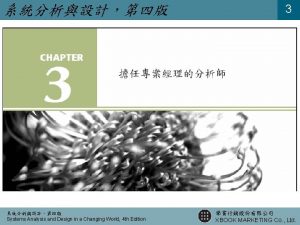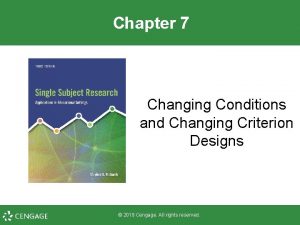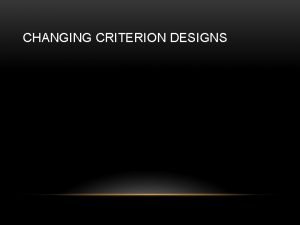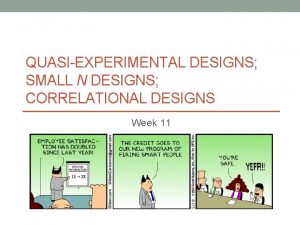CHANGING CRITERION DESIGNS CHANGING CRITERION DESIGN Used to








- Slides: 8

CHANGING CRITERION DESIGNS

CHANGING CRITERION DESIGN • Used to evaluate effects of a treatment that is applied in a graduated fashion to a single target behavior • Baseline is followed by Treatment phase • Once stabilized, the treatment serves as a baseline for increased criterion of the next phase • Is a variation of the multiple baseline design • Shows repeated production of new rates of behavior as function of manipulations of independent variable • Is very flexible

GUIDELINES FOR USE • Requires careful manipulation of 3 design factors: • length of phases • magnitude of criterion changes • number of criterion changes

LENGTH OF PHASES • Each treatment phase must be long enough to achieve stable responding • Acts as a baseline • Is slower to change target behaviors • May require longer treatment phases • Should vary phases considerably to increase validity

MAGNITUDE OF CRITERION CHANGES • Varying size of changes gives more convincing demonstration of experimental control • Must be large enough to be detectable, but not so large as to be unachievable • Can get ratio strain • Smaller changes can be used with very stable levels of responding • Larger changes may be required to demonstrate behavior change

NUMBER OF CRITERION CHANGES • The more times the behavior changes to meet new level, the more convincing the experimental control • Interrelated with phase length and magnitude of criterion changes • If limited time for study, the greater the number of phases, the shorter each phase can be

POINTS TO NOTE • Does not require reversal of improved behavior • Only one target behavior is required • Should only for use with behaviors that are in a subjects repertoire • Should lend themselves to stepwise modification and potential increase. • Not appropriate for shaping behaviors

SUMMARY • Best suited for evaluating effects of instructional techniques on stepwise changes in rate, frequency, accuracy, duration, or latency of single target behavior • Is a good design for school settings • Final point. You can reach a level where you cannot go any higher or any faster due to subject limitations • >100% is hard to do
 Changing-criterion design
Changing-criterion design Disadvantages of changing criterion design
Disadvantages of changing criterion design Changing criterion design
Changing criterion design The recurring aspects of designs are called design
The recurring aspects of designs are called design The recurring aspects of designs are called design
The recurring aspects of designs are called design The recurring aspects of designs are called design
The recurring aspects of designs are called design Systems analysis and design in a changing world
Systems analysis and design in a changing world Systems analysis and design in a changing world
Systems analysis and design in a changing world Systems analysis and design in a changing world
Systems analysis and design in a changing world














